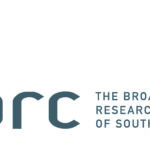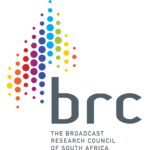 This week, a new milestone in reading currency research was reached when the PRC (Publisher Research Council) released the first PAMS (Publisher Audience Measure Survey) results that measure reading across multiple platforms.
This week, a new milestone in reading currency research was reached when the PRC (Publisher Research Council) released the first PAMS (Publisher Audience Measure Survey) results that measure reading across multiple platforms.
 “The main objective for the PRC was to achieve an accurate measurement of reading behaviour across multiple platforms to enable the buying and selling of advertising,” says Peter Lamidngscht, consultant to the PRC. “We feel that this objective, to a large extent, has been achieved and we’re thrilled to present the findings of the very first PAMS to the industry.
“The main objective for the PRC was to achieve an accurate measurement of reading behaviour across multiple platforms to enable the buying and selling of advertising,” says Peter Lamidngscht, consultant to the PRC. “We feel that this objective, to a large extent, has been achieved and we’re thrilled to present the findings of the very first PAMS to the industry.
The purpose of the launch in Johannesburg and Cape Town was to provide a broad overview of the study with some salient results and findings. We started with a clean sheet, and even the definition of ‘reading’ was relooked, with the question adapted to include the phrase ‘reading for one minute or longer’ across all platforms and devices, namely paper, cellphone, desktop/laptop and tablet.”
The survey made use of global best practices. A brand first approach was adopted, with respondents self-selecting titles, then measuring paper and online formats, or inserts. New visual frequency scale and multiple pick-ups were amongst many innovative changes. PAMS is the first reading study worldwide to use ‘flooding’. This allows for multiple interviews in the same household, resulting in 17 386 interviews conducted in 10 000 households.
The sample for PAMS was designed by Dr Ariane Neethling and achieved an astounding national coverage of 223 of the 224 municipalities. A disproportionate sample was used to up-weight areas of economic importance and population groups, achieving a weighting efficiency of 83%.
Although the survey’s data (including the paper measure) is not compatible with AMPS (All Media and Products Survey), the results are reasonably consistent with AMPS and some comparisons between the two surveys have been made.
Paper is still the dominant platform for reading at 82%.
The top ten ranked daily newspapers reflect similar titles and readership between PAMS and AMPS with Daily Sun, Sowetan and Isolezwe taking the top three spots. 
Weekly newspapers display similar matches with Soccer Laduma, Sunday Times and Sunday Sun as the top three, albeit that they have changed places.

Magazines also show a similar pattern with nine of the top twelve titles being the same in both studies. 
The PRC also included two placebo (non-existent) titles namely The World and Tshepo. These were included to model over-claiming. As it happens, only six respondents claimed to have read Tshepo and 56 out of 17 386 (around 1 in 300 respondents), The World (The World claim being confused with World News online). “This incredibly low level of claimed reading of fake titles validates the PAMS methodology and fieldwork,” comments Langschmidt.
In any research, it is important that no glaring inaccuracies are uncovered, and PAMS validates well against other large sample research, namely Statistics South Africa’s, Community Survey 2016.
“Like software, we refer to this as PAMS 1.0. While we have made great strides in terms of reducing RPC (readers per copy) with newspapers, there is still work to do in the magazine environment. Much of this relates to specific vs. average issue measurement which will be addressed using our upcoming online panel,” concludes Langschmidt.
“The validity and credibility of the data released is of the utmost importance to us as the PRC and vital for the industry at large. To ensure this, in close cooperation with our research partner, Nielsen, we are in the final stages of final validation of all data.
The release of data to the agencies and bureaus will take place once Nielsen and our members have concluded these final checks and validations.
PAMS goes back into the field next month – March 2018.”
For additional information and more in-depth data of titles, please make use of the PRC’s website or contact the PRC on 011 326 4041.
- MRF Unveils Latest MAPS® Data - 20th February 2025
- The BRC announces changes to the board and updates for 2025 - 17th December 2024
- Top 50 DSTV TV programmes – October 2024 - 12th November 2024




